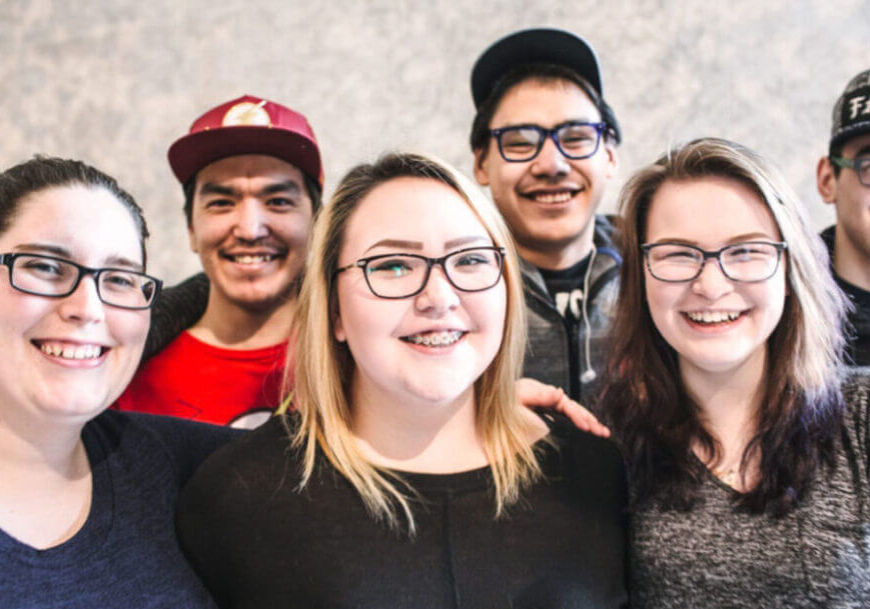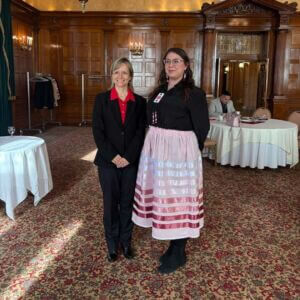by ICC Staff

Art has always been a cornerstone of human culture. It has been used to pass down tradition, convey spirituality, and express identity, among other things. In the present day, art continues to serve this purpose. But it also has the power to go beyond.
In the Canadian context, Indigenous art is, for many people, the first point of contact with Indigenous culture. Its unique styles and historical significance make it especially captivating. For this reason, many governments and non-profit organizations have taken it upon themselves to elevate Indigenous art in schools, museums, and public life, as it has the potential to confront the past and reshape national narratives.
Healing Through Expression
For generations, Indigenous stories were silenced by colonial systems that attempted to erase culture through policies like the residential school system. These schools, which operated for over a century, forcibly removed Indigenous children from their families, forbade them from speaking their languages, and suppressed their traditions.
As a result, much of Canada’s educational landscape has historically neglected Indigenous worldviews, leaving a major gap in understanding and empathy among non-Indigenous Canadians.
Indigenous art can help bridge this divide. Whether through visual art, music, dance, storytelling, or film, Indigenous artists offer powerful perspectives on identity, resistance, and the enduring impacts of colonization. Including these works in education allows students to engage with Indigenous knowledge systems not just intellectually, but emotionally and spiritually.
Moreover, Indigenous art challenges the idea that history is something static and behind us. Works like Kent Monkman’s provocative paintings or the installations of Rebecca Belmore speak to both the historical trauma and contemporary resilience of Indigenous peoples.
They force viewers to confront uncomfortable truths, while also celebrating the beauty and depth of Indigenous culture. This dual role, of confronting and celebrating, is where art becomes a uniquely powerful tool for transformation.
Access to culturally relevant education, including the arts, improves outcomes for Indigenous youth. The National Collaborating Centre for Indigenous Health notes that culturally safe learning environments –– where Indigenous heritage is respected and represented — help foster higher self-esteem and engagement. This isn’t just good for reconciliation; it’s good education policy.
Catalyst for Systemic Change
Beyond the classroom, public promotion of Indigenous art through murals, festivals, gallery exhibitions, and media, also contributes to a broader societal shift. Initiatives like the Winnipeg Art Gallery’s Qaumajuq centre, which showcases over 14,000 individual pieces of Inuit art, more than any other gallery worldwide, helps normalize Indigenous presence in spaces which previously excluded them.
Universities have also taken a leading role in using art as an educational tool. In Manitoba, several universities have instituted Indigenous course requirements where students can learn about subjects like Indigenous anthropology and art history. Since 1986, the University of Winnipeg has made its gallery 1c03 available to the public, frequently showcasing Indigenous stories and artwork.
Importantly, supporting Indigenous artists also means supporting Indigenous economies. Many artists act as cultural ambassadors and community leaders. Investing in their work is an investment in cultural sustainability, intergenerational learning, and economic empowerment.
Reconciliation is not just about apologies and policies, it’s about relationships, recognition, and respect. Promoting Indigenous art helps cultivate all three. When we uplift Indigenous voices through art, we don’t just learn about the past, we begin to imagine and create a better shared future.
Join Our Newsletter
As Manitoba's voice for Indigenous business and your partner in economic reconciliation, we connect you to opportunities that drive change. Subscribe to receive updates on Indigenous business developments, partnership opportunities, and upcoming events delivered straight to your inbox.



